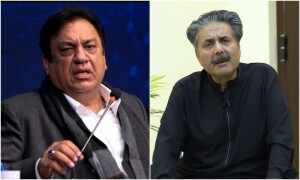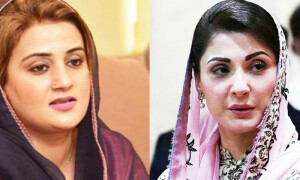PHNOM PENH: Cambodian workers demanding higher wages to toil in factories making Gap jeans and Nike trainers have found themselves on the frontline of a bloody crackdown on dissent by strongman premier Hun Sen.
Months of peaceful protests by opposition supporters demanding new elections have posed little threat to Hun Sen, one of the world’s longest-serving leaders.
But when striking factory workers began to join forces with the opposition, the ruling Cambodian People’s Party (CPP) responded swiftly with at least four workers shot dead and dozens wounded by security forces.
The tough tactics reflect the potent political force represented by the hundreds of thousands of Cambodian workers who stitch the clothes and footwear worn by many in the West.
“If the two streams of protest had been allowed to merge — political opponents and striking workers — they would have presented a threat of enormous magnitude to the Hun Sen regime,” said Cambodia expert Carl Thayer.
If the two movements come together and adopt a militant stance, the Hun Sen regime “can either resort to brute force to crush opposition or the CPP can jettison Hun Sen in the hopes of clinging to power,” said Thayer.
About 650,000 workers provide the backbone of Cambodia’s multi-billion dollar garment industry — a key source of foreign income for the impoverished Southeast Asian nation.
They are demanding a doubling of the minimum wage to $160 a month, or about $8 a day. So far the government has offered them $100.
Safety worries are also rife in an industry that periodically sees mass fainting episodes often blamed on poor health, bad ventilation or exposure to dangerous chemicals.
Opposition leader Sam Rainsy has urged Western clothing companies and consumers to be responsible when buying what he described as “blood garments”. He urged consumers in the US and Europe “to check if there is any drop of blood in the garment they intend to buy”.
Hun Sen has overseen Cambodia’s transformation from a nation devastated by the regime’s “Killing Fields” genocide era in the late 1970s to become one of Southeast Asia’s most vibrant economies. The 61-year-old prime minister has ruled for 28 years and vowed to continue until he is 74.
His government is regularly accused of ignoring human rights and suppressing political dissent.Hun Sen’s critics allege that the deadly crackdown on striking workers was a pretext for a raid the following day on a peaceful opposition protest in a Phnom Penh park.
The government has since indefinitely banned demonstrations and the garment workers have ended their strike. Most have returned to work while some fled back to their villages in fear.Despite the lull in tensions, the workers say the battle is not over. “We will continue our demand for higher wages until we have enough money,” said Khim Vat, 42, who works at a factory producing clothes for brands including Nike.
Pressure is mounting from international brands and labour movements to avoid further bloodshed. “We strongly oppose any form of violence, and urge the government of Cambodia to drive negotiations among stakeholders to peacefully resolve this dispute,” Gap spokeswoman said.
The row highlights a broader dilemma facing manufacturers — how to balance the expectations of Western consumers for affordable clothing with the demands of workers for a rising wage.
The Garment Manufacturers Association in Cambodia says the strikes have already cost the industry $200 million.
The risk for Cambodia is that if the industry becomes uncompetitive, the brands might take their business elsewhere.
With a current minimum wage of around $80 per month for garment workers, Cambodian labour costs are already higher than in Bangladesh, the world’s second largest clothes manufacturer, but below those of industry leader China.
“There will always be another low cost labour source somewhere,” said Douglas Clayton, chief executive of a private-equity firm that invests in frontier markets. “Western brands will do the minimum response required to avoid negative publicity. They know that most Western shoppers care more about value than values.”—AFP














































Dear visitor, the comments section is undergoing an overhaul and will return soon.